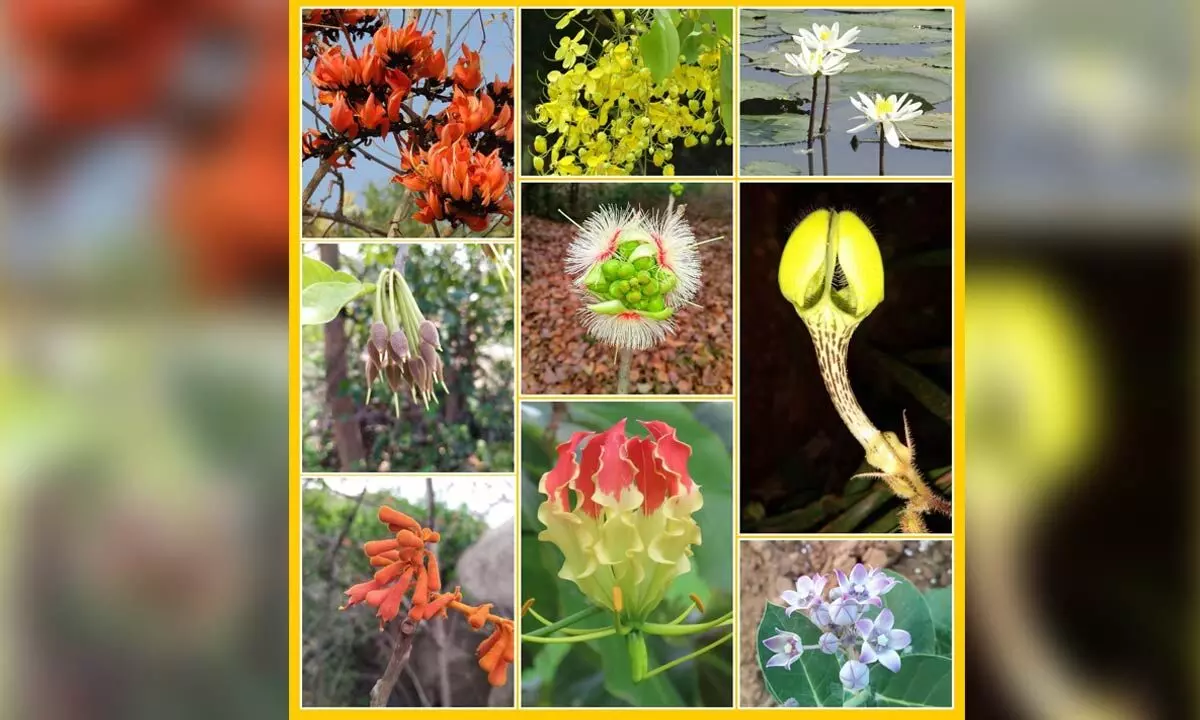Live
- BGT: Kaif gives preference to Jaiswal-Rahul opening pair for Boxing Day Test against Australia
- Odisha CM Majhi, Naveen Patnaik extend Christmas greetings
- Icebreaker Keyboard: AluminIum Design Costing as Much as a MacBook Pro
- ‘Rifle Club’ Movie Review: A Stylish Thriller That Falls Short in Storytelling
- Chennai to Experience Heavy Rain as Severe Low-Pressure System Approaches Coastal Areas
- Pradeep’s ‘Akkada Ammayi Ikkada Abbayi’ hypes up with energetic new song
- Dil Raju releases ‘Adi Dha Saaru’ song from ‘Sahakutumbanam’
- GTA 5 Online Car Duplication Glitch: How to Duplicate Cars for Money (2024)
- 'Srikakulam Sherlock Holmes' Review: A quirky thriller thay doesn’t impress
- Ambedkar's vision for country neglected by Congress, says PM Modi
Just In
Agro Biodiversity Park in PJTSAU faces threat as govt allocates land for new HC


The shifting of the Telangana High Court to Budvel has evoked a sense of deep disappointment among a broader community beyond the protesting advocates.
Hyderabad: The shifting of the Telangana High Court to Budvel has evoked a sense of deep disappointment among a broader community beyond the protesting advocates. Specifically, scientists and researchers affiliated with the Professor Jayashankar Telangana State Agricultural University (PJTSAU) in Rajendranagar express profound dismay regarding this decision.
The selected 100-acre site designated for the establishment of the high court encompasses a significant portion, approximately 35-40 acres, of land originally belonging to the PJTSAU. Over the years, this area has been meticulously developed as a vital agri-biodiversity zone dedicated to research and educational pursuits.
The park occupies a 130-acre area, with approximately 65-70 acres comprising the Mulagund lake, a portion that hasn't yet been officially designated by the Hyderabad Metropolitan Development Authority.
The rest of the land, developed around 2008, was part of the All-India Coordinated Research Project, a collaborative effort by the Indian Council of Agricultural Research and the State government. Its primary aim was to establish sustainable and lucrative agroforestry models, intending to disseminate these models for the benefit of farmers and industry.
Speaking to The Hans India, V Vasudeva Rao, a retired professor from the university, says, “This location has been instrumental in supporting a diverse range of agricultural crops, contributing significantly to the recent popularity of the Telangana Sona Masoori rice variety. It has served as a crucial site for preserving gene reserves across various species, proving immensely beneficial for researchers pursuing diverse objectives. Almost two decades of dedicated effort have been invested in this project, inaugurated by the former Chief Minister of the erstwhile Andhra Pradesh in 2010.
Our team has extensively visited various projects, including the Aravalli Biodiversity Park and the Yamuna Biodiversity Park in Delhi, gaining insights and experiences from these endeavors.”
The entire land is divided into various blocks of species such as palm, teak, neem, mahua, ficus, amla, toddy, phoenix, mixed fruit trees and medicinal plants, besides a VIP plantation block.
During the period of study, 439 plant species belonging to 313 genera and 85 families of 34 orders were recorded. Among them, 80 species of trees, 206 species of herbs, 56 species of shrubs, 52 species of climbers, six species of palms and 39 species of grasses were reported.
The faunal diversity recorded on the campus includes 454 animal species pertaining to 151 families and 43 orders. Nearly 43% (194 species) are invertebrates, 39% (181 species) birds, 12% (59 species) herpetofauna and 4% (20 species) mammals.
There were popular flora/medicinal plants which include Maredu, OdugaChettu, Rela, ErraChandaram, Chintha, Tella Maddi, Pala Kodisha, shrubs such as VeluthurChettu, Gorintaku, Vavilli, Mandra Kappa Kaya and others.
An endemic, endangered and globally threatened plant species Ceropegiabulbosa var. lushii was reported from here 215 years after it was last spotted in urban environments, aside from Ashoka (Saraca Asoka), another threatened tree species. Threatened faunal species such as Red Sanboa, darter and pallid harrier were found here, Rao said.

© 2024 Hyderabad Media House Limited/The Hans India. All rights reserved. Powered by hocalwire.com






